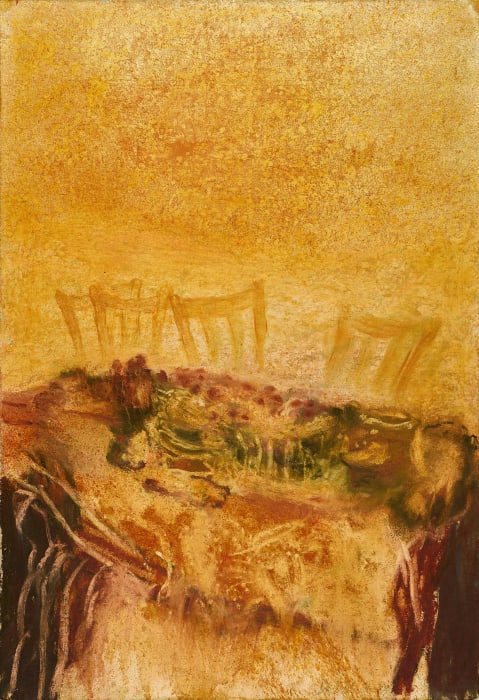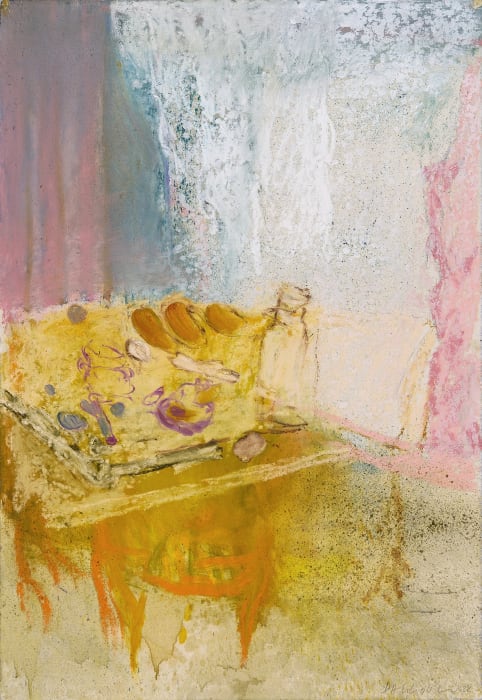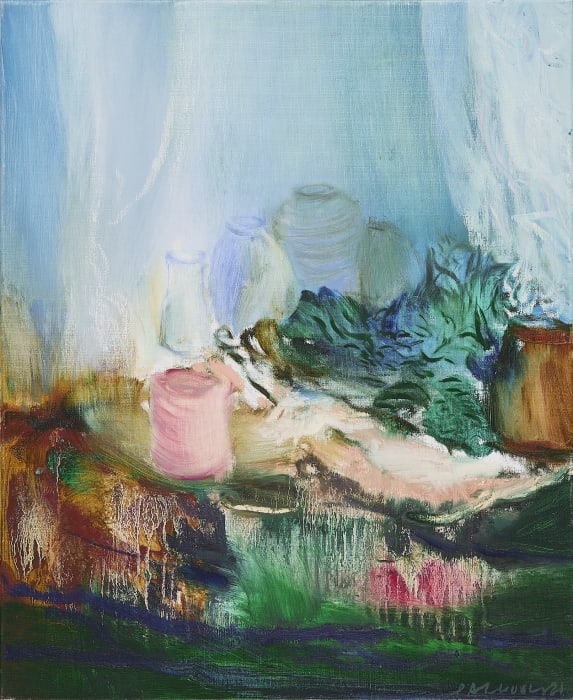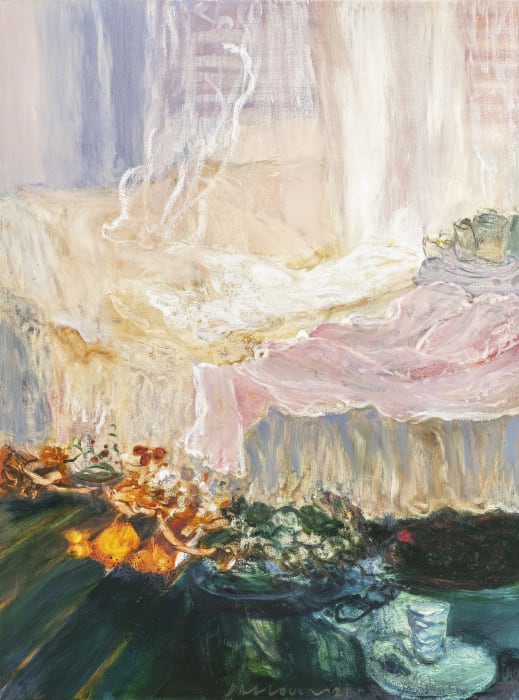Ziad Dalloul 齊亞德・達盧勒 b. 1953
Painting a landscape on one's canvas is not an end in itself. You have to step into the landscape to see it from the inside, deconstruct it in order to reconstruct it, in accordance with our imagination and memory, which is inseparable from the representation of any work of art.
—— Ziad Dalloul
Born in Syria and based in Paris since 1984, the accomplished painter and printmaker Ziad Dalloul (b. 1953, Soueïda) creates paintings using traditional materials such as black and sepia ink, oil, canvas and handmade paper. Through exploring the dichotomy between the static (the intimate world of lived space and everyday objects, in particular the chair, the bed, the table and the curtain), and the ever-changing (the landscape, and more broadly nature as the site of memory and questioning), Dalloul challenges definitions associated with both the East and the West while simultaneously referencing art history's relationship to his work.
Dalloul rejects the term 'nature morte' ('still life', or literally 'dead nature'). Instead, he prefers the expression 'nature silencieuse' ('silent nature') which is derived from Arabic. Paradoxical silences exist in his work, like the mute objects laid out in a studio at the heart of a busy city centre. No logs lie in the blackened fireplace, but plants creep steadily across the walls. Pomegranates and chestnuts appear scattered on tables.
A graduate of the Faculty of Fine Arts, Damascus (1977), Dalloul taught art in Algeria before moving to Paris, where he obtained a degree from the École Nationale Supérieure des Arts Décoratifs (1987). Skilled in painting, etching and artists' books, Dalloul is considered to be among the most accomplished artists from the Arab world.
He has been the subject of solo exhibitions in Paris, Italy, Belgium, Damascus, Jordan, Abu Dhabi, and Egypt. His works are included in prominent public collections, including the British Museum, London; the Bibliothèque Nationale, Paris; the Institut du Monde Arabe, Paris; Khalid Shoman Foundation, Amman and Barjeel Art Foundation, Sharjah.
-
 Swampland《沼澤風光》, 2016
Swampland《沼澤風光》, 2016 -
 Interior World《室內世界》, 2017
Interior World《室內世界》, 2017 -
 Table of the Water《浮檯》, 2017
Table of the Water《浮檯》, 2017 -
 Reflections of Midnight Blue《夜半藍調》, 2017
Reflections of Midnight Blue《夜半藍調》, 2017 -
 Nocturne of a Water Source《泉音夜曲》, 2017
Nocturne of a Water Source《泉音夜曲》, 2017 -
 Feast on Bed II《以床為餐桌之二》, 2018
Feast on Bed II《以床為餐桌之二》, 2018 -
 Tablescape – Pink Tablecloth《檯面景緻 - 粉紅色的檯布》, 2020
Tablescape – Pink Tablecloth《檯面景緻 - 粉紅色的檯布》, 2020 -
 Still Life 《靜物》, 2021
Still Life 《靜物》, 2021 -
 Morning Light《晨曦》, 2021
Morning Light《晨曦》, 2021 -
 Hazy Light《日色朦朧》, 2021
Hazy Light《日色朦朧》, 2021 -
 The Repose of Things – The Yellow Summer《靜物 - 黃色夏日》, 2022
The Repose of Things – The Yellow Summer《靜物 - 黃色夏日》, 2022 -
 Window with White Curtains《襯上白色窗簾的一扇窗》, 2022
Window with White Curtains《襯上白色窗簾的一扇窗》, 2022 -
 The Repose of Things – The Yellow Summer《靜物 - 黃色夏日》, 2022
The Repose of Things – The Yellow Summer《靜物 - 黃色夏日》, 2022 -
 The Tree of Eros《愛神之樹》, 2023
The Tree of Eros《愛神之樹》, 2023
The unique and the multiple (1987 - 1990)
As an artist and printmaker, Dalloul’s enquiry into the unique and the multiple is a thread that runs throughout his practice: 'My first encounter with painting was an encounter with the reproductions of paintings in books. It is therefore fun to check whether the painting is an image or whether it is an object in itself. It was right, for me as an engraver, to question the multiplicity of the image. Is it necessary to make prints of the engraved plate or can we be satisfied with a single copy?’
Whilst at the École Nationale Supérieure des Arts Décoratifs, Dalloul produced the series Circumstances of places, ten bicoloured, large-format drypoint and carborundum engravings, whose simplicity of form and palette would inform the structure and composition of many future works: 'I transformed the place into a space which shelters a reduced number of elements, even a single element, I tried to interpret the third dimension by transforming it into a field of visual vibrations which shelters clear zones and dark masses determined by the density of materials or colour; thus I provoked depth without recourse to the traditional vanishing point. Technically, I worked to reconcile painting and engraving, considering the metal plate as a pictorial field. They are valid matrixes to be hung as well as to be printed.’
This was followed by two series entitled Museum notebooks and Regarding painting, which investigated the history of painting through the use of the reproduction as a kind of 'quote' within the painting and the print.
Towards a synthesis of 'otherness' (1987 - 1999)
In Dalloul's paintings of this period, writing functions as 'the other', an interloper within the pictorial space. But Dalloul unifies these disparities, co-opting fragments of manuscripts and the accounting books of his father within his paintings like talismanic symbols, prized for their formal qualities rather than their content.
'In the climate of the studio, there is little difference between knowledge and tangibility, between drawing sheets and library sheets. [...] The manuscript is the participation of the other. My painting is the picture rail. It is an attempt to read painting in its language and in its own materials. An attempt to situate the conception of the plastic act between the self and the other, the image and the object, the idea and the tangible.'
Dalloul's drawing and printmaking practices also translated into distinctly graphic works. Executed in Indian ink, black gouache and sepia ink before being translated into print form, their virtuoso gestures and spare, essential traces evoke the sacredness of Arabic calligraphy. His images dialogue with the written words of his poet collaborators, most famously his compatriot Adonis, who has been described as the greatest living poet of the Arab world. The works produced for their collaborations (Path of desire in the geography of matter (1989), The hand of stone draws the place of Adonis (1993) and The Book of Cities (1999)) are the symbolic and mythical evocations of places around the world: Paris, Beirut, Marrakech, Fez, Granada, Cairo, Petra and New York. A mysterious and intimate correspondence between artist and poet breathes abundant life into these epic, eternal black and white cities, where 'emptiness takes the form of fullness', writes Adonis.
Silent nature (2000 onwards)
'In the rain, nature and all things are shrouded in mist. The forest is restored to its original state: radiant and shining with a bright shimmering light reflected on water: damp grass climbing up the air; tree trunks pounding the earth to release their lust. An everlasting sensual delight. The lightning illuminates stones hidden beneath the slumbering flowers, between chestnuts and pomegranates. Streams exhale the smell of the woods that bathe in the sweat of the rain and sleep on the bed of desire.'
A visual abundance spills from Dalloul's canvases, with depictions of the sensory world - furrowed trees, wet earth, grassy smells emanating from the undergrowth, inky chiaroscuro shadows - creating a carnal, Baroque hymn to nature.
'Nature is not a landscape; it is raw material for asking existential questions, simple and deep questions at the same time. But often without an answer, or that the answer will be a step to expand [the question] again.'
Over the past twenty years, we have noticed a return to colour and painting around a major subject dealing with nature in the broad sense of the term.
'We discover the world first by looking, then by the senses and perception. From this conception, the world in its visual and intuitive components forms the pictorial material of my work. As for Man, I see him more interrogative than representative, it is merged into Nature which itself sums up the Universe.
Four things of man represent him:
The bed; place of birth and death, space of love and night;
The chair; bearer of Man in rest and in work, incubator of meditation, knowledge and the sacred;
Table; support of food, sharing and celebration;
The curtain; window and passage between the intimate and the commonplace, between the inside and the outside, the visible and the invisible.'
In his studio Dalloul began to stage still life tableaux, rejecting the term 'nature morte' ('still life', or literally 'dead nature') in favour of the Arabic-derived term 'nature silencieuse' ('silent nature'). Sometimes combined with landscapes and at other times with the figurative, they always gleam with the subtle shimmer of past memories. Pierre Cabanne describes 'a jubilation of lived space' in these interior landscapes, of unctuous, velvety materials and a richness of light that reveals the paradoxical warm presence of life and the surrealistic sheen of suspended memories. Embracing his past and his present on opposite shores of the Mediterranean Sea, Dalloul's paintings speak of the symbiosis and metamorphosis between such worlds.
Dalloul's pantheistic approach to painting reveals a world at one with nature: diaphanous curtains frame the scene like weeping willows; trees cast shadows over tables laden with food and beds wide like rivers. Successive layers of blue liquid veils and earthy browns are interspersed with bursts of fresh pinks, ivories, greys and ochres. Man is conspicuously absent, yet its presence permeates, opening up pathways between the inside and the outside, the visible and the imagined:
'Man as a presence in absence. All these things that throb with life, and pulsate to the core, aligned and scattered on the earth's printed fabrics like crops: plates, fruits, bread, a world of colours as wide as the light spectrum, chairs wrapped up with turquoise shawls, filled with the scent of secrecy.'
-
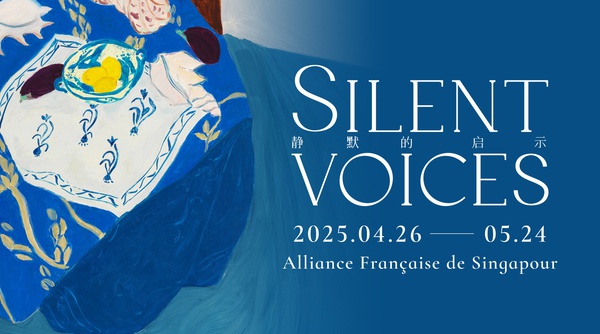
Silent Voices - Pierre Boncompain, Ziad Dalloul, Denis Laget
Alliance Française de Singapour 26 Apr - 24 May 2025Kwai Fung Hin Art Gallery is delighted to present Silent Voices, an exhibition exploring the enduring resonance of still life through the works of Pierre...Read more -
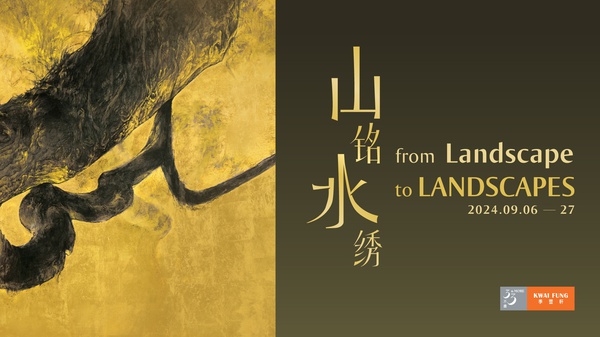
From Landscape to Landscapes
Alliance Française de Singapour 6 - 27 Sep 2024Kwai Fung Hin is pleased to announce its debut exhibition in Singapore, From Landscape to Landscapes, a group exhibition that brings together works by artists...Read more -
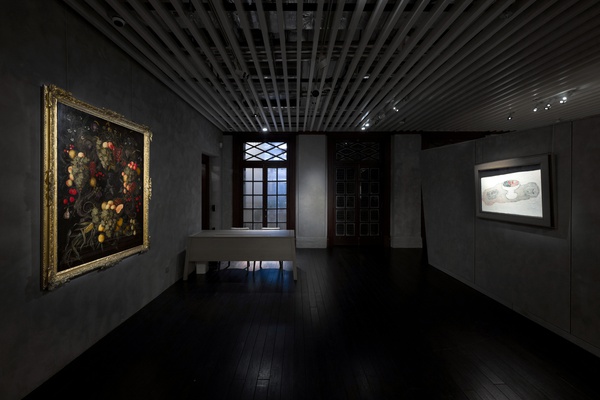
Eternity in Transience
Kwai Fung Hin Art Gallery 2 May - 29 Jun 2024Kwai Fung Hin Art Gallery is delighted to present Eternity in Transience, a group exhibition focusing on floral still-life paintings, as part of the associated project of the French May Arts Festival.Read more -

Shimmer of Memory — Solo Exhibition of Ziad Dalloul
Kwai Fung Hin Art Gallery 20 May - 26 Aug 2023Kwai Fung Hin Art Gallery is thrilled to represent the works of French-Syrian artist Ziad Dalloul (b.1953) in Asia on an exclusive basis, featuring his debut solo exhibition Shimmer of Memory in Hong Kong in May.Read more
-

Booth C01丨KWAI FUNG HIN AT TOKYO GENDAI 2024
4 - 7 Jul 2024Kwai Fung Hin Art Gallery is thrilled to announce its debut at Tokyo Gendai art fair this year. The gallery will showcase a diverse and...Read more -

Booth BI06 丨 Art SG 2023
11 - 15 Jan 2023Kwai Fung Hin Art Gallery's presentation at ART SG unites eight preeminent artists, Ziad Dalloul, Piero Dorazio, Li Huayi, Lalan, Georges Mathieu, Nicolas Party, Xue Song and Jonas Wood.Read more
-
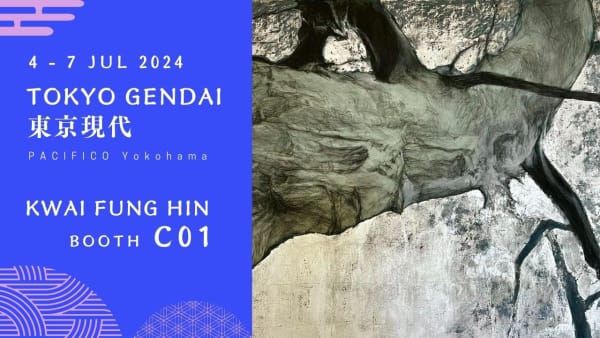
Booth C01丨KWAI FUNG HIN AT TOKYO GENDAI 2024
4 - 7 Jul 2024Kwai Fung Hin Art Gallery is thrilled to announce its debut at Tokyo Gendai art fair this year. The gallery will showcase a diverse and...Read more -

Booth D13 丨 Taipei Dangdai Art & Ideas 2023
11 - 14 May 2023Kwai Fung Hin Art Gallery is delighted to participate in the Taipei Dangdai Art & Ideas for the first time, with a curation of important artworks from gallery's represented artists, demonstrating extensive cultural experiences and global perspectives, which bridge the West and the East in fresh and remarkable ways.Read more -

Booth 3E03 丨 ART BASEL HONG KONG 2023
21 - 25 Mar 2023Kwai Fung Hin is delighted to participate in the 2023 edition of Art Basel Hong Kong with a selection of important works by modern and contemporary artists.Read more -

Booth BI06 丨 Art SG 2023
11 - 15 Jan 2023Kwai Fung Hin Art Gallery's presentation at ART SG unites eight preeminent artists, Ziad Dalloul, Piero Dorazio, Li Huayi, Lalan, Georges Mathieu, Nicolas Party, Xue Song and Jonas Wood.Read more
